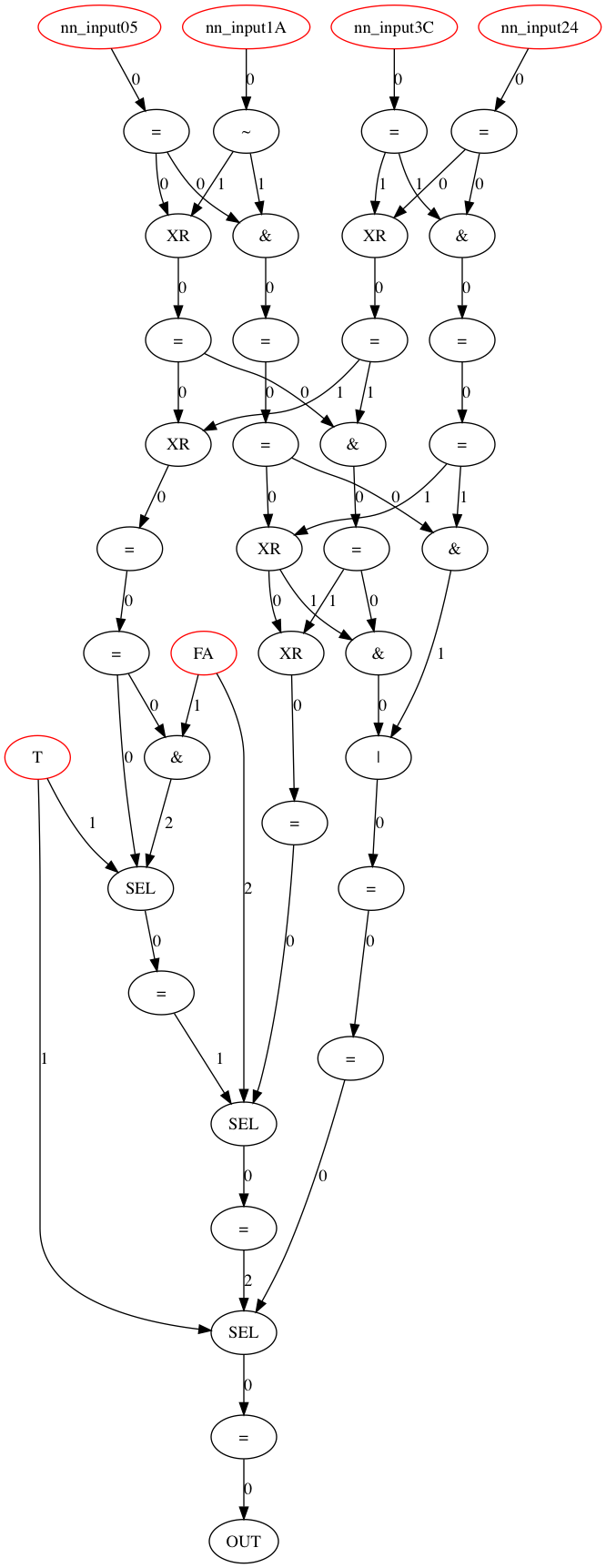matSHEEP
This library is a programmatic interface in python to generate a circuit for the bigger and more useful SHEEP library.
The library has a few data types :
- variables - A single bit (Could also be used as a normal scalar)
- enc_vec - One dimensional bit vector (Could be used a one dimensional vector of any data type)
- enc_mat - Two dimensional bit matrix (Could be used a one dimensional vector of any data type)
- enc_tensor3 - Three dimensional bit tensor.
To create a circuit, the basic class to inherit is mini_mod in
mathsheep.interactions. To add more components, you can use
self.add(component) inside the create function as shown below.:
class oneb_adder(mini_mod):
def __init__(self, name, inputs, outputs, nb=None,
randomize_temps=1, carry=True):
mini_mod.__init__(self, name, inputs, outputs)
self.create(...)
def create(self, ...):
self.add(..)
Two types of components can be added.
-
Assignments (
from matSHEEP.interactions)- mono_assign
- alias
- negate
- bi_assign
- xor
- and
- or
- constand
- tri_assign
- mux
- mono_assign
-
Other mini_mods
There are a few predefined mini_mods. They can be found in
-
matSHEEP.reusable_modules-
- oneb_adder - Add two bits
- nb_adder - Adders x and y with incoming carrt where input
is
[cin x y] - nb_adder_xy - Adds x and y with
input = (x, y) - compare_cp - Compares ciphertext with plaintext with
input = (c,p)
-
matSHEEP.functions-
- reduce_add - Counts the number of ones in a bit vector.
-
matSHEEP.nn_layer-
- sign_fn
- linear_layer_1d - Inner Product of a weight vector with encrypted bit vector followed by a sign function.
- linear_layer - Inner Product of a weight matrix with an encrypted bit vector followed by a sign function.
- conv_layer - A convolution Layer. (Look at examples)
-
matSHEEP.vector_ops-
- vec_mono_op_cond - Takes a plaintext
condvector, a plaintext tupleass_typescontaining onlyaliasandnegateas values and an encrypted bit vectorinput. It outputs an encrypted bit vector where the ith position has theass_types[cond[idx]]operation applied oninput[idx]. - Similar operation for matrix and tensor.
- vec_mono_op_cond - Takes a plaintext
You can also visualize the circuits you create. test.sheep is a
circuit file.:
import sys
import matSHEEP.create_graph as cg
complete_node = cg.get_circuit_graph('./test.sheep')
ng = cg.networkx_graph(complete_node)
ng.draw()
And you can get

gFor more high level operations and results using layers of Neural Networks visit this markdown